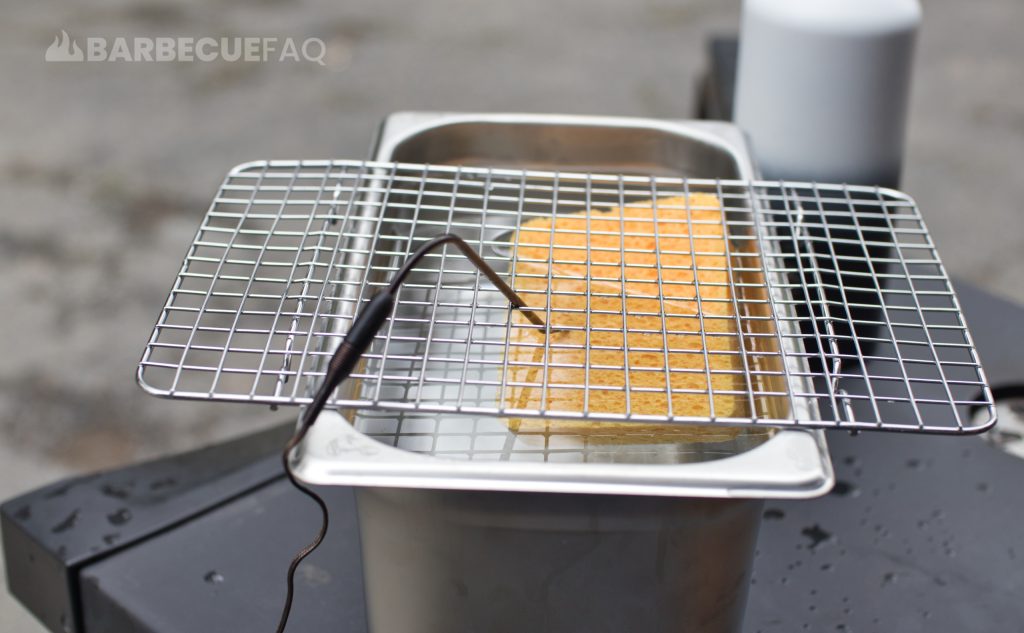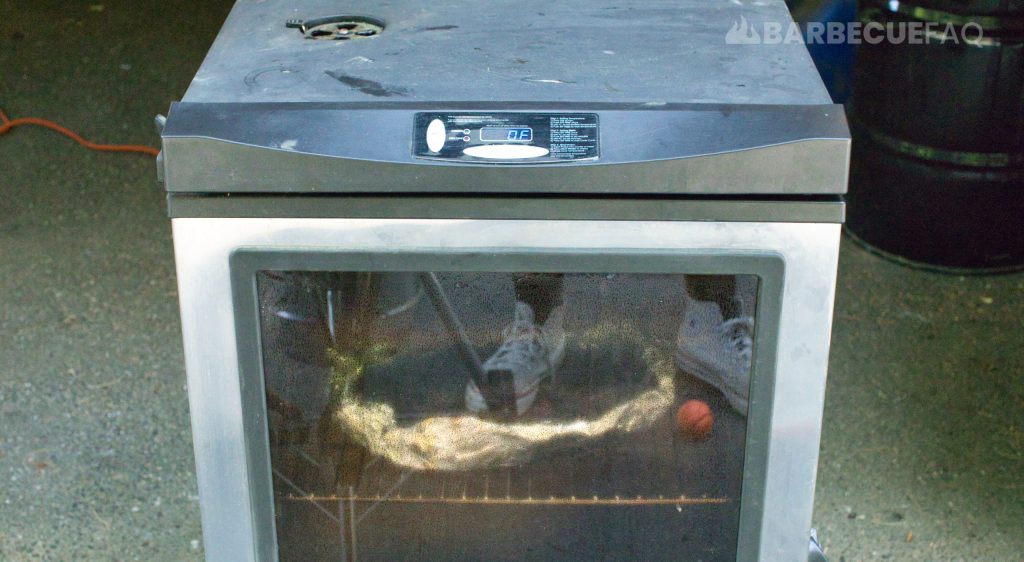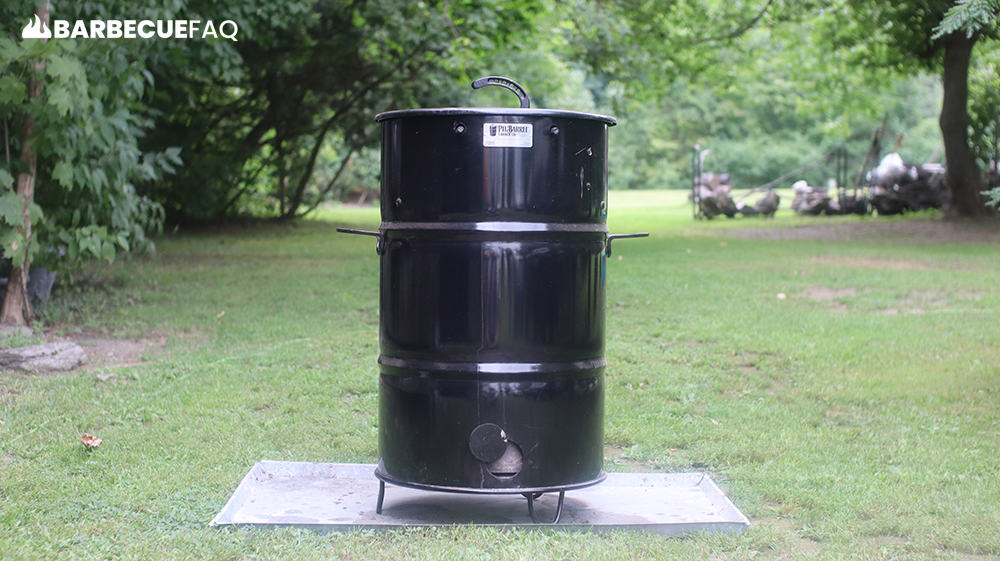The first thing to do is test your electric smoker for accuracy:
You will need:
- A large oven-safe bowl or container.
- A thick sponge.
- A probe thermometer.
- A way to keep the sponge slightly submerged in the bowl – I used an oven safe cooling rack.
Setting Up the Test in Your Electric Smoker
1. Fill a large bowl or container with lukewarm water.
2. Place the sponge in the water and squeeze it to ensure it becomes saturated.
The saturated sponge is simulating our “meat.”
3. Place the sponge in the water and then place a cooling rack and/or something else on top to stabilize the thermometer and sponge.

4. With your probe thermometer, probe into one side of the sponge.
You want to probe the sponge deep enough so that it’s reading the internal temperature of the sponge while it’s submerged in water.
By probing one side, it will naturally want to sink to that side – which is why you want something to stabilize it from flipping.
5. Ensure your exhaust vent is CLOSED.
Leaving it open will allow heat to escape – which is the exact opposite of a holding oven.
Running the Test
The goal here is to ensure that the food always stays above 140F internal.
The reason for this very specific temperature is due to food safety; Between 40-140F, you enter the “Food Safety Danger Zone” where bacteria multiply rapidly.
1. Start your electric smoker and set the temperature to 145F.

Allow the test apparatus to come up in temperature.
2. If the temperature of the water/sponge continues to increase by 5-10F every hour, leave the smoker temperature until it stalls.
3. Once it stalls, bump the temperature by 10-20F.
Then go back to monitoring internal temperature until it stalls again or until the temperature is 140F+.
4. Once it reaches 140F, allow the temperature to continue to rise until it stalls. Then wait and ensure this temperature is stable for at least 1 hour.

Hourly Log from my Testing
| Hour/Temperature (F) | Internal Temperature (F) |
|---|---|
| 0 (lukewarm water) | 105.9 |
| 1 / 145F | 114.2 |
| 2 / 145F* | 119.2 |
| 3 / 145* | 122.8 |
| 4 / 165 | 129 |
| 5 / 165* | 133.3 |
| 6 / 175 | 138.4 |
| 7 / 175* | 142.3 |
| 8 / 175 | 144.3 |
| 9 / 175 | 145.1 |
| 10 / 175 | 145.6 |
| 11 / 175 | 145.9 |
| 12 / 185 | 147.4 |
| 13 / 185 | 148.6 |
| 14 / 185 | 149.1 |
So from the above I now know that I’d set my smoker to 175F and then hot hold the meat (wrapped). The internal temperature should be above 145F.
If you wanted to be more safe, you could opt to bump to 185F, the internal would then be well above 145F at around 150F.
Repeat these tests every season or when the outdoor temperature is significantly different.
I’m in New Hampshire:
- Winter is typically -10 to 30F outside.
- Spring/Fall is typically 50 to 65F outside.
- Summer is typically 75F to 100F outside.
All of these outdoor temperatures require different smoker temperatures to hot hold food safely.
Using this Test In a Real World Application
The next time you need to overnight hold your meat in your electric smoker, you have a few options:
1. If the meat is completely probe tender
Take the meat out of the electric smoker and and rest it for 1-2 hours or however long it takes to get to 160F.

Then put it back in your electric smoker at the temperature you found above until it’s time to slice.
2. If the meat still has a slight tightness in a few spots
Don’t rest the meat and instead drop the temperature of the electric smoker to the one you found above. Then burp the door for 5 minutes (allowing the heat to escape), put your wrapped meat in and close the door.
This will allow carry over cooking to fix these tight spots.




